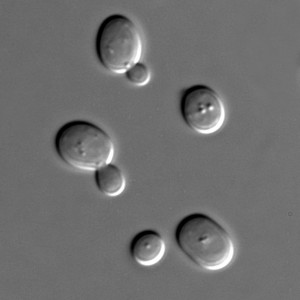 Bioengineers have been successfully encoding and implanting custom genes into viruses, bacteria and yeast for a while now. These new genes usually cause these organisms to do something different, such as digest industrial waste, kill malignant hosts and manufacture useful chemicals.
Bioengineers have been successfully encoding and implanting custom genes into viruses, bacteria and yeast for a while now. These new genes usually cause these organisms to do something different, such as digest industrial waste, kill malignant hosts and manufacture useful chemicals.
So, it should come as no surprise to see the advent — only in the laboratory at the moment — of yeast capable of producing narcotics. There seems to be no end to our inventiveness.
Personally, I’m waiting for a bacteria that can synthesize Nutella and a fungus that can construct corporate Powerpoint presentations.
From the NYT:
In a widely expected advance that has opened a fierce debate about “home-brewed heroin,” scientists at Stanford have created strains of yeast that can produce narcotic drugs.
Until now, these drugs — known as opioids — have been derived only from the opium poppy. But the Stanford lab is one of several where researchers have been trying to find yeast-based alternatives. Their work is closely followed by pharmaceutical companies and by the Drug Enforcement Administration and Federal Bureau of Investigation.
Advocates of the rapidly advancing field of bioengineering say it promises to make the creation of important chemicals — in this case painkillers and cough suppressants — cheaper and more predictable than using poppies.
In one major advance more than a decade ago scientists in Berkeley added multiple genes to yeast until it produced a precursor to artemisinin, the most effective modern malaria drug, which previously had to be grown in sweet wormwood shrubs. Much of the world’s artemisinin is now produced in bioengineered yeast.
But some experts fear the technology will be more useful to drug traffickers than to pharmaceutical companies. Legitimate drug makers already have steady supplies of cheap raw materials from legal poppy fields in Turkey, India, Australia, France and elsewhere.
For now, both scientists and law-enforcement officials agree, it will be years before heroin can be grown in yeast. The new Stanford strain, described Thursday in the journal Science, would need to be 100,000 times as efficient in order to match the yield of poppies.
It would take 4,400 gallons of yeast to produce the amount of hydrocodone in a single Vicodin tablet, said Christina D. Smolke, the leader of the Stanford bioengineering team.
For now, she said, anyone looking for opioids “could buy poppy seeds from the grocery store and get higher concentrations.”But the technology is advancing so rapidly that it may match the efficiency of poppy farming within two to three years, Dr. Smolke added.
Read the story here.
Image: Saccharomyces cerevisiae cells in DIC microscopy. Public Domain.
